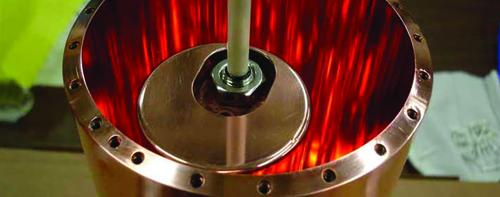
Several Wright Laboratory faculty have recently been awarded funding for their work in the emerging field of Quantum Information Science (QIS).
Two faculty were awarded a 2018 U.S. Department of Energy (DOE) Office of Science High Energy Physics (HEP) Quantum Information Science Enabled Discovery (QuantISED) grant and two were awarded funding from the Office of Naval Research (ONR) Basic Research Challenge (BRC) on levitated optomechanics.
The QuantISED award is part of a new $218 million initiative from the DOE to fund research in the emerging field of Quantum Information Science (QIS). More information about this initiative can be found in this press release.
- Reina Maruyama, in collaboration with Aaron Chou (Fermilab), David Schuster (University of Chicago), and Konrad Lehnert (University of Colorado/JILA), was awarded QuantiSED funding for for developing technologies for axion searches using techniques used in quantum information. The award is titled Quantum Metrology Techniques for Axion Dark Matter Detection and Chou is listed as the PI. More information about the project can be found in a recent article in Symmetry.
- Keith Baker was awarded QuantISED funding for his proposal Quantum Information Science in High Energy Physics at the Large Hadron Collider. This project studies thermal radiation and quantum entanglement (entanglement entropy) in proton-proton collisions at the Large Hadron Collider (LHC), with special emphasis on the Higgs boson. The study seeks to confirm (or refute) the proposed relation between the effective temperature and the hard scattering scale observed at lower energies, and if so, show that it extends even to the Higgs boson production process. The research enables foundational advances in QIS by incorporation of physical principles from particle physics.
The primary goal of the 2018 ONR BRC on levitated optomechanics is to achieve the quantum state of a mechanical oscillator. For more information, see Topic 2 in this document.
- David Moore, along with a co-investigator at Stanford, received ONR BRC funding to study rotational degrees of freedom of levitated spheres for the proposal entitled Rotation of Optically Levitated Microspheres. The very low dissipation measured for these spheres in ultra high vacuum may allow them to be cooled to the regime in which quantum effects on the nano-gram scale objects could be observed. An additional goal is to use such objects as extremely sensitive torque sensors at the micron scale.
- Jack Harris, along with five other PIs at different universities, was awarded ONR BRC funding for the proposal Mesoscopic quantum science and metrology with levitated mechanical systems. The overall goal of the grant is to observe quantum behavior in the motion of levitated objects. The project in Wright Lab uses magnetic levitation to suspend a cubic millimeter of superfluid liquid helium in vacuum. To date, the group has studied the production and levitation of these drops, their thermal properties (they cool efficiently via evaporative cooling), and their (classical) motion. The group is working towards trapping light inside the drops and eventually using this light to study the drop’s quantum motion.